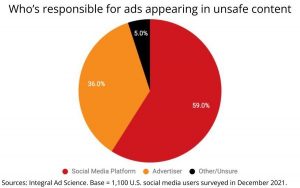— July 23, 2018
Big data has opened the door for businesses to market their products and services much more effectively. In fact, according to a new survey of senior executives, 64% of respondents said that data-driven marketing strategies produce better and faster results and are the key to success.
Targeting your prime audience and pinpointing your exact market allows for a more focused, cost-effective approach.
Gather Your Data and Explore Alternative Marketing Channels

The first thing you must do is gather your data and research which digital channels line up with your audience. Right within your own organization, you could be sitting on tons of useful data about your perfect customer, their traits, buying habits and demographics.
There are also dozens of online resources and information portals where you can access public records to be used in marketing to your consumers. These massive databases hold much more than just demographic information; they also show behavioral traits, preferences and other critical information for profiling your target market.
Gathering data from social media metrics will give you a leg up on the competition and show you exactly what social media channels your customers are using the most and what the conversation is about so you can drive content to those consumers to pique their interest.
Practice Smart Retargeting
Retargeting can be your marketing team’s secret weapon. When used correctly retargeting will generate renewed interest and a facelift for sales that have gone stale.
The key points to here note are: first, be sure to segment your audience into small, focused groups so you can tailor your ads specifically for these individuals.
You want to be sure to avoid overexposure and use things like burn codes and frequency caps to turn off ads for people who have already been exposed to them and purchased. Too much “in your face” advertising will turn away promising prospects.
Take the time to craft ads that target segments by demographics, geographical location, and context. Decisions about where to promote these ads should focus on the same, segmented data. Pinpointing exactly who will see your ads saves both money and valuable impressions.
Identify the Best Channels For Your Business
Smart marketing teams know that you need to research the best channels for your business. Where is your audience hanging out and what are their interests?
According to a profound statistic, “90 percent of Twitter users who see a TV show-related tweet are likely to immediately watch the show, search for more information, or share tweet-based content about that show.” This figure is useful information that you as a market professional can use.
Don’t just start your own conversation; join theirs. Find your target audience and use what they are already interested in, to fast-track the discussion and put the focus on you.
Determine Which Metrics Will Measure Your Success

Before you launch even that first banner ad, tweet or design your landing page, you should know ahead of time what your goal is. Do you hope to have more traffic on a specific webpage or do you want to see your social media following grow?
You will want to keep track of all the figures for engagement, clicks, shares, and hits but know ahead of time what you are looking for, so you know when you reach the finish line.
Soft Launch to Test Your Data
You’ve put a lot of time and effort into your marketing strategies, and you are ready to test them out. Try a soft launch to one or two segmented audiences before unleashing the whole floodgate of potential customers. This way you can test to make sure your data collection was sound, and your predictions match your results.
Customer-Facing Content
Customize your content to each of your specific segmented audiences. Use the data about their collective preferences, behaviors, and routines to fine-tune it.
For example, you wouldn’t want to promote something that would be unavailable in a specific geographical area or even worse, unusable. Selling snow shovels in Phoenix would result in a big miss.
Throughout the entire marketing process, keep testing and refining to ensure you are accounting for market changes, trends and data fluctuations.
Digital & Social Articles on Business 2 Community
(43)




